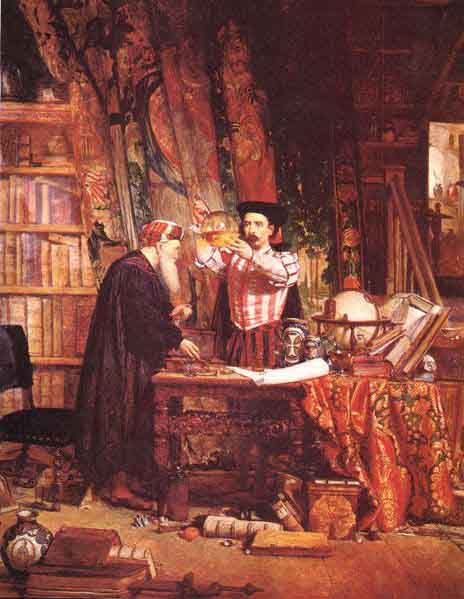
Alchemy was practiced in Mesopotamia, Ancient Egypt, Persia, India, Japan, Korea and China, in Classical Greece and Rome, in the Muslim civilizations, and then in Europe up to the 19th century in a complex network of schools and philosophical systems spanning at least 2,500 years.
In the history of science, alchemy refers to both an early form of the investigation of nature and an early philosophical and spiritual discipline, both combining elements of chemistry, metallurgy, physics, medicine, astrology, semiotics, mysticism, spiritualism, and art all as parts of one greater force.
Alchemy is an ancient path of spiritual purification and transformation; the expansion of consciousness and the development of insight and intuition through images. Alchemy is steeped in mysticism and mystery. It presents to the initiate a system of eternal, dreamlike, esoteric symbols that have the power to alter consciousness and connect the human soul to the Divine.
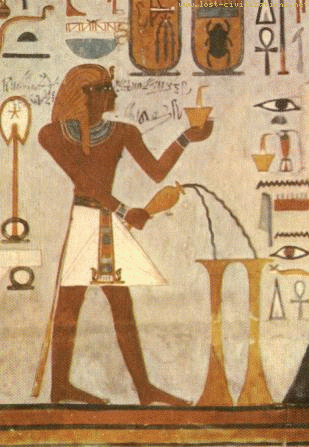
It is part of the mystical and mystery traditions of both East and West. In the West, it dates to ancient Egypt, where adepts first developed it as an early form of chemistry and metallurgy. Egyptians alchemists used their art to make alloys, dyes, perfumes and cosmetic jewelry, and to embalm the dead.
The early Arabs made significant contributions to alchemy, such as by emphasizing the mysticism of numbers (quantities and lengths of time for processes). The Arabs also gave us the term 'alchemy', from the Arabic term 'alchimia', which loosely translated means 'the Egyptian art'.
During medieval and Renaissance times, alchemy spread through the Western world, and was further developed by Kabbalists, Rosicrucians, astrologers and other occultists. It functioned on two levels: mundane and spiritual. On a mundane level, alchemists sought to find a physical process to convert base metals such as lead into gold. On a spiritual level, alchemists worked to purify themselves by eliminating the "base" material of the self and achieving the 'gold' of enlightenment.
By Renaissance times, many alchemists believed that the spiritual purification was necessary in order to achieve the mundane transformations of metals.
The alchemists relied heavily upon their dreams, inspirations and visions for guidance in perfecting their art. In order to protect their secrets, they recorded diaries filled with mysterious symbols rather than text. These symbols remain exceptionally potent for changing states of consciousness.
Alchemy is a form of speculative thought that, among other aims, tried to transform base metals such as lead or copper into silver or gold and to discover a cure for disease and a way of extending life.
Alchemy was the name given in Latin Europe in the 12th century to an aspect of thought that corresponds to astrology, which is apparently an older tradition. Both represent attempts to discover the relationship of man to the cosmos and to exploit that relationship to his benefit. The first of these objectives may be called scientific, the second technological.
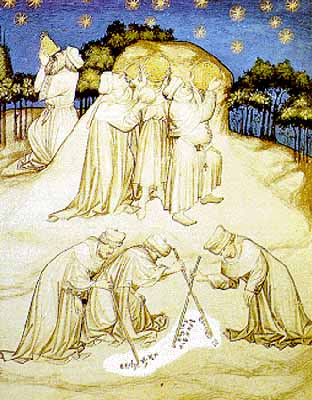
Astrology is concerned with man's relationship to "the stars" (including the members of the solar system); alchemy, with terrestrial nature. But the distinction is far from absolute, since both are interested in the influence of the stars on terrestrial events. Moreover, both have always been pursued in the belief that the processes human beings witness in heaven and on earth manifest the will of the Creator and, if correctly understood, will yield the key to the Creator's intentions.
That both astrology and alchemy may be regarded as fundamental aspects of thought is indicated by their apparent universality. It is notable, however, that the evidence is not equally substantial in all times and places.
Evidence from ancient Middle America (Aztecs, Mayans) is still almost nonexistent; evidence from India is tenuous and from ancient China, Greece, and Islamic lands is only relatively more plentiful.
A single manuscript of some 80,000 words is the principal source for the history of Greek alchemy.
Chinese alchemy is largely recorded in about 100 "books" that are part of the Taoist canon.
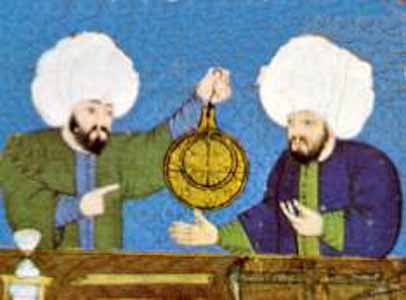
Neither Indian nor Islamic alchemy has ever been collected, and scholars are thus dependent for their knowledge of the subject on occasional allusions in works of natural philosophy and medicine, plus a few specifically alchemical works.
Nor is it really clear what alchemy was (or is). The word is a European one, derived from Arabic, but the origin of the root word, chem, is uncertain. Words similar to it have been found in most ancient languages, with different meanings, but conceivably somehow related to alchemy. In fact, the Greeks, Chinese, and Indians usually referred to what Westerners call alchemy as "The Art," or by terms denoting change or transmutation.
Superficially, the chemistry involved in alchemy appears a hopelessly complicated succession of heatings of multiple mixtures of obscurely named materials, but it seems likely that a relative simplicity underlies this complexity. The metals gold, silver, copper, lead, iron, and tin were all known before the rise of alchemy.
Mercury, the liquid metal, certainly known before 300 BC, when it appears in both Eastern and Western sources, was crucial to alchemy. Sulfur, "the stone that burns," was also crucial. It was known from prehistoric times in native deposits and was also given off in metallurgic processes (the "roasting" of sulfide ores).
Mercury united with most of the other metals, and the amalgam formed colored powders (the sulfides) when treated with sulfur. Mercury itself occurs in nature in a red sulfide, cinnabar, which can also be made artificially. All of these, except possibly the last, were operations known to the metallurgist and were adopted by the alchemist.
The alchemist added the action on metals of a number of corrosive salts, mainly the vitriols (copper and iron sulfates), alums (the aluminum sulfates of potassium and ammonium), and the chlorides of sodium and ammonium. And he made much of arsenic's property of colouring metals. All of these materials, except the chloride of ammonia, were known in ancient times.
Known as sal ammoniac in the West, nao sha in China, nao sadar in India, and nushadir in Persia and Arabic lands, the chloride of ammonia first became known to the West in the Chou-i ts'an t'ung ch'i, a Chinese treatise of the 2nd century AD.
It was to be crucial to alchemy, for on sublimation it dissociates into antagonistic corrosive materials, ammonia and hydrochloric acid, which readily attack the metals. Until the 9th century it seems to have come from a single source, the Flame Mountain (Huo-yen Shan) near T'u-lu-p'an (Turfan), in Central Asia.
Finally, the manipulation of these materials was to lead to the discovery of the mineral acids, the history of which began in Europe in the 13th century. The first was probably nitric acid, made by distilling together saltpetre (potassium nitrate) and vitriol or alum. More difficult to discover was sulfuric acid, which was distilled from vitriol or alum alone but required apparatus resistant to corrosion and heat. And most difficult was hydrochloric acid, distilled from common salt or sal ammoniac and vitriol or alum, for the vapours of this acid cannot be simply condensed but must be dissolved in water.
"Transmutation" is the key word characterizing alchemy, and it may be understood in several ways: in the changes that are called chemical, in physiological changes such as passing from sickness to health, in a hoped-for transformation from old age to youth, or even in passing from an earthly to a supernatural existence. Alchemical changes seem always to have been positive, never involving degradation except as an intermediate stage in a process having a "happy ending." Alchemy aimed at the great human "goods": wealth, longevity, and immortality.
Alchemy was not original in seeking these goals, for it had been preceded by religion, medicine, and metallurgy. The first chemists were metallurgists, who were perhaps the most successful practitioners of the arts in antiquity. Their theories seem to have come not from science but from folklore and religion. The miner and metallurgist, like the agriculturalist, in this view, accelerate the normal maturation of the fruits of the earth, in a magico-religious relationship with nature. In primitive societies the metallurgist is often a member of an occult religious society.
But the first ventures into natural philosophy, the beginnings of what is called the scientific view, also preceded alchemy. Systems of five almost identical basic elements were postulated in China, India, and Greece, according to a view in which nature comprised antagonistic, opposite forces--hot and cold, positive and negative, and male and female; i.e., primitive versions of the modern conception of energy. Drawing on a similar astrological heritage, philosophers found correspondences among the elements, planets, and metals. In short, both the chemical arts and the theories of the philosophers of nature had become complex before alchemy appeared.
Chinese alchemy
Neither in China nor in the West can scholars approach with certitude the origins of alchemy, but the evidences in China appear to be slightly older. Indeed, Chinese alchemy was connected with an enterprise older than metallurgy--i.e., medicine. Belief in physical immortality among the Chinese seems to go back to the 8th century BC, and belief in the possibility of attaining it through drugs to the 4th century BC. The magical drug, namely the "elixir of life" (elixir is the European word), is mentioned about that time, and that most potent elixir, "drinkable gold," which was a solution (usually imaginary) of this corrosion-resistant metal, as early as the 1st century BC--many centuries before it is heard of in the West.
Although non-Chinese influences (especially Indian) are possible, the genesis of alchemy in China may have been a purely domestic affair. It emerged during a period of political turmoil, the Warring States Period (from the 5th to the 3rd century BC), and it came to be associated with Taoism--a mystical religion founded by the 6th-century-BC sage Lao-tzu--and its sacred book, the Tao-te Ching ("Classic of the Way of Power"). The Taoists were a miscellaneous collection of "outsiders"--in relation to the prevailing Confucians--and such mystical doctrines as alchemy were soon grafted onto the Taoist canon. What is known of Chinese alchemy is mainly owing to that graft, and especially to a collection known as Y¸n chi ch'i ch'ien ("Seven Tablets in a Cloudy Satchel"), which is dated 1023. Thus, sources on alchemy in China (as elsewhere) are compilations of much earlier writings.
The oldest known Chinese alchemical treatise is the Chou-i ts'an t'ung ch'i ("Commentary on the I Ching"). In the main it is an apocryphal interpretation of the I Ching ("Classic of Changes"), an ancient classic especially esteemed by the Confucians, relating alchemy to the mystical mathematics of the 64 hexagrams (six-line figures used for divination). Its relationship to chemical practice is tenuous, but it mentions materials (including sal ammoniac) and implies chemical operations.
The first Chinese alchemist who is reasonably well known was Ko Hung (AD 283-343), whose book Pao-p'u-tzu (pseudonym of Ko Hung) contains two chapters with obscure recipes for elixirs, mostly based on mercury or arsenic compounds.
The most famous Chinese alchemical book is the Tan chin yao ch¸eh ("Great Secrets of Alchemy"), probably by Sun Ssu-miao (AD 581-after 673). It is a practical treatise on creating elixirs (mercury, sulfur, and the salts of mercury and arsenic are prominent) for the attainment of immortality, plus a few for specific cures for disease and such other purposes as the fabrication of precious stones.
Altogether, the similarities between the materials used and the elixirs made in China, India, and the West are more remarkable than are their differences. Nonetheless, Chinese alchemy differed from that of the West in its objective. Whereas in the West the objective seems to have evolved from gold to elixirs of immortality to simply superior medicines, neither the first nor the last of these objectives seems ever to have been very important in China.
Chinese alchemy was consistent from first to last, and there was relatively little controversy among its practitioners, who seem to have varied only in their prescriptions for the elixir of immortality or perhaps only over their names for it, of which one Sinologist has counted about 1,000. In the West there were conflicts between advocates of herbal and "chemical" (i.e., mineral) pharmacy, but in China mineral remedies were always accepted.
In Europe, there were conflicts between alchemists who favoured gold making and those who thought medicine the proper goal, but the Chinese always favoured the latter. Since alchemy rarely achieved any of these goals, it was an advantage to the Western alchemist to have the situation obscured, and the art survived in Europe long after Chinese alchemy had simply faded away.
Chinese alchemy followed its own path. Whereas the Western world, with its numerous religious promises of immortality, never seriously expected alchemy to fulfill that goal, the deficiencies of Chinese religions in respect to promises of immortality left that goal open to the alchemist. A serious reliance on medical elixirs that were in varying degrees poisonous led the alchemist into permanent exertions to moderate those poisons, either through variation of the ingredients or through chemical manipulations.
The fact that immortality was so desirable and the alchemist correspondingly valued enabled the British historian of science Joseph Needham to tabulate a series of Chinese emperors who probably died of elixir poisoning. Ultimately a succession of royal deaths made alchemists and emperors alike more cautious, and Chinese alchemy vanished (probably as the Chinese adopted Buddhism, which offered other, less dangerous avenues to immortality), leaving its literary manifestations embedded in the Taoist canons.
The oldest Indian writings, the Vedas (Hindu sacred scriptures), contain the same hints of alchemy that are found in evidence from ancient China, namely vague references to a connection between gold and long life. Mercury, which was so vital to alchemy everywhere, is first mentioned in the 4th- to 3rd-century-BC Artha-sastra, about the same time it is encountered in China and in the West.
Evidence of the idea of transmuting base metals to gold appears in 2nd- to 5th-century-AD Buddhist texts, about the same time as in the West. Since Alexander the Great had invaded India in 325 BC, leaving a Greek state (Gandhara) that long endured, the possibility exists that the Indians acquired the idea from the Greeks, but it could have been the other way around.
It is also possible that the alchemy of medicine and immortality came to India from China, or vice versa; in any case, gold making appears to have been a minor concern, and medicine the major concern, of both cultures. But the elixir of immortality was of little importance in India (which had other avenues to immortality). The Indian elixirs were mineral remedies for specific diseases or, at the most, to promote long life.
As in China and the West, alchemy in India came to be associated with religious mysticism, but much later--not until the rise of Tantrism (an esoteric, occultic, meditative system), AD 1100-1300. To Tantrism are owed writings that are clearly alchemical (such as the 12th-century Rasarnava, or "Treatise on Metallic Preparations").
From the earliest records of Indian natural philosophy, which date from the 5th-3rd centuries BC, theories of nature were based on conceptions of material elements (fire, wind, water, earth, and space), vitalism ("animated atoms"), and dualisms of love and hate or action and reaction.
The alchemist colored metals and on occasion "made" gold, but he gave little importance to that. His six metals (gold, silver, tin, iron, lead, and copper), each further subdivided (five kinds of gold, etc.), were "killed" (i.e., corroded) but not "resurrected," as was the custom of Western alchemy. Rather, they were killed to make medicines. Although "the secrets of mercurial lore" became part of the Tantric rite, mercury seems to have been much less important than in China.
The Indians exploited metal reactions more widely, but, although they possessed from an early date not only vitriol and sal ammoniac but also saltpetre, they nevertheless failed to discover the mineral acids. This is the more remarkable because India was long the principal source of saltpetre, which occurs as an efflorescence on the soil, especially in populous tropical countries.
But it lacks the high degree of corrosivity of metals possessed by the vitriols and chlorides and played a small part in early alchemy. Saltpetre appears particularly in 9th- to 11th-century-AD Indian and Chinese recipes for fireworks, one of which--a mixture of saltpetre, sulfur, and charcoal--is gunpowder. Saltpetre first appears in Europe in the 13th century, along with the modern formula for gunpowder and the recipe for nitric acid.
Western alchemy may go back to the beginnings of the Hellenistic period (c. 300 BC-c. AD 300), although the earliest alchemist whom authorities have regarded as authentic is Zosimos of Panopolis (Egypt), who lived near the end of the period. He is one of about 40 authors represented in a compendium of alchemical writings that was probably put together in Byzantium (Constantinople) in the 7th or 8th century AD and that exists in manuscripts in Venice and Paris. Synesius, the latest author represented, lived in Byzantium in the 4th century. The earliest is the author designated Democritus but identified by scholars with Bolos of Mende, a Hellenized Egyptian who lived in the Nile Delta about 200 BC.
He is represented by a treatise called Physica et mystica ("Natural and Mystical Things"), a kind of recipe book for dyeing and colouring but principally for the making of gold and silver. The recipes are stated obscurely and are justified with references to the Greek theory of elements and to astrological theory.
Most end with the phrase "One nature rejoices in another nature; one nature triumphs over another nature; one nature masters another nature," which authorities variously trace to the Magi (Zoroastrian priests), Stoic pantheism (a Greek philosophy concerned with nature), or to the 4th-century-BC Greek philosopher Aristotle. It was the first of a number of such aphorisms over which alchemists were to speculate for many centuries.
In 1828 a group of ancient papyrus manuscripts written in Greek was purchased in Thebes (Egypt), and about a half-century later it was noticed that among them, divided between libraries in Leyden (The Netherlands) and Stockholm, was a tract very like the Physica et mystica. It differed, however, in that it lacked the former's theoretical embellishments and stated in some recipes that only fraudulent imitation of gold and silver was intended. Scholars believe that this kind of work was the ancestor both of the Physica et Mystica and of the ordinary artist's recipe book. The techniques were ancient. Archaeology has revealed metal objects inlaid with colours obtained by grinding metals with sulfur, and Homer's description (8th century BC) of the shield of Achilles gives the impression that the artist in his time was virtually able to paint in metal. Democritus is praised by most of the other authors in the Venice-Paris manuscript, and he is much commented upon.
- Zosimos of Panopolis was a Greek alchemist and Gnostic Mystic from the end of the 3rd century, beginning of the 4th A.D., who was born in Panopolis, present day Akhmim in the South of Egypt, ca. 300.
In about 300 A.D., Zosimos provided one of the first definitions of alchemy:
- Alchemy (330) the study of the composition of waters, movement, growth, embodying and disembodying, drawing the spirits from bodies and bonding the spirits within bodies.
He wrote the oldest known books on alchemy, of which only quotations in the original Greek language or translations into Syriac or Arabic are known. He is one of about 40 authors represented in a compendium of alchemical writings that was probably put together in Byzantium (Constantinople) in the 7th or 8th century AD and that exists in manuscripts in Venice and Paris. Stephen of Alexandria is another.
Arabic translations of texts by Zosimos were discovered in 1995 in a copy of the book Keys of Mercy and Secrets of Wisdom by Ibn Al-Hassan Ibn Ali Al-Tughra'i', a Persian alchemist. Unfortunately, the translations were incomplete and seemingly non-verbatim.
The famous index of Arabic books, Kitab al-Fihrist by Ibn Al-Nadim, mentions earlier translations of four books by Zosimos, however due to inconsistency in transliteration, these texts were attributed to names "Thosimos", "Dosimos" and "Rimos"; also it is possible that two of them are translations of the same book.
In general, his understanding of alchemy reflects the influence of Hermetic and Sethian-Gnostic spiritualities. The external processes of metallic transmutation the transformations of lead and copper into silver and gold--mirror an inner purification and redemption.
The alchemical vessel is imagined as a baptismal font, and the tincturing vapours of mercury and sulphur are likened to the purifying waters of baptism, which perfect and redeem the Gnostic initiate. Here Zosimos draws on the Hermetic image of the 'krater' or mixing bowl, a symbol of the divine mind in which the Hermetic initiate was 'baptised' and purified in the course of a visionary ascent through the heavens and into the transcendent realms. Similar ideas of a spiritual baptism in the 'waters' of the transcendent Pleroma are characteristic of the Sethian-Gnostic texts unearthed at Nag Hammadi. This image of the alchemical vessel as baptismal font is central to his so-called 'Visions', discussed below.
Zosimos shows what had become of alchemy after Bolos of Mende. His theory is luxuriant in imagery, beginning with a discussion of "the composition of waters, movement, growth, embodying and disembodying, drawing the spirits from bodies and binding the spirits within bodies" and continuing in the same vein. The "base" metals are to be "ennobled" (to gold) by killing and resurrecting them, but his practice is full of distillation and sublimation, and he is obsessed with "spirits." Theory and practice are joined in the concept that success depends upon the production of a series of colours, usually black, white, yellow, and purple, and that the colors are to be obtained through Theion hydor (divine or sulfur water--it could mean either).
Zosimos credits these innovations mainly to Maria (sometimes called "the Jewess"), who invented the apparatus, and to Agathodaimon, probably a pseudonym. Neither is represented (beyond Zosimos' references) in the Venice-Paris manuscript, but a tract attributed to Agathodaimon, published in 1953, shows him to be preoccupied with the colour sequence and complicating it by using arsenic instead of sulfur. Thus, the color-producing potentialities of chemistry were considerable by the time of Zosimos.
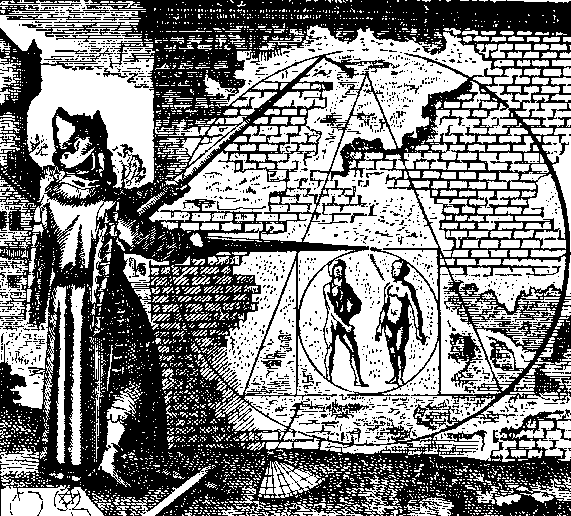
The Philosopher's Stone
Zosimos also shows that alchemical theory came to focus on the idea that there exists a substance that can bring about the desired transformation instantly, magically, or, as a modern chemist might say, catalytically. He called it "the tincture," and had several. It was also sometimes called "the powder" (xerion), which was to pass through Arabic into Latin as elixir and finally (signifying its inorganic nature) as the "philosopher's stone," "a stone which is not a stone," as the alchemists were wont to say.
It was sometimes called a medicine for the rectification of "base" or "sick" metals, and from this it was a short step to view it as a drug for the rectification of human maladies. Zosimos notes the possibility, in passing. When the objective of alchemy became human salvation, the material constitution of the elixir became less important than the incantations that accompanied its production. Synesius, the last author in the Venice-Paris manuscript, already defined alchemy as a mental operation, independent of the science of matter.
Thus, Greek alchemy came to resemble, in both theory and practice, that of China and India. But its objectives included gold making; thus it remained fundamentally different.
Arabic alchemy is as mysterious as Greek in its origins, and the two seem to have been significantly different. The respect in which Physica et mystica was held by the Greek alchemists was bestowed by the Arabs on a different work, the Emerald Tablet of Hermes Trismegistos, the reputed Hellenistic author of various alchemical, occultic, and theological works.




0 comments:
Post a Comment